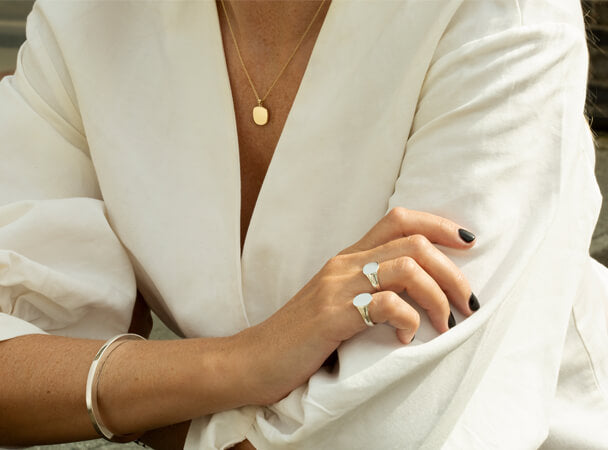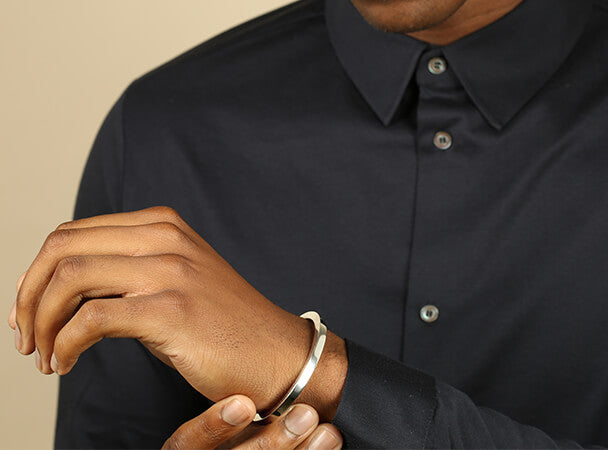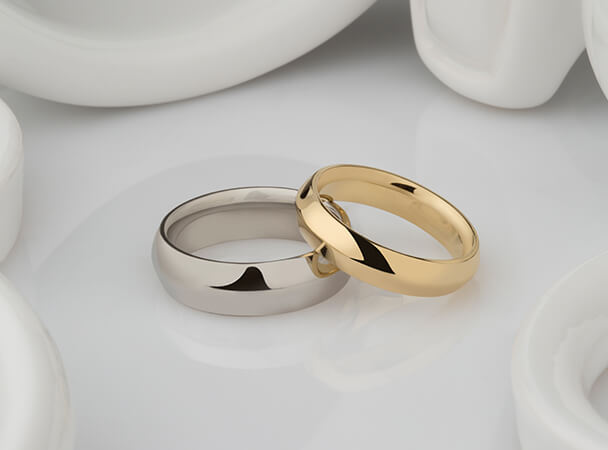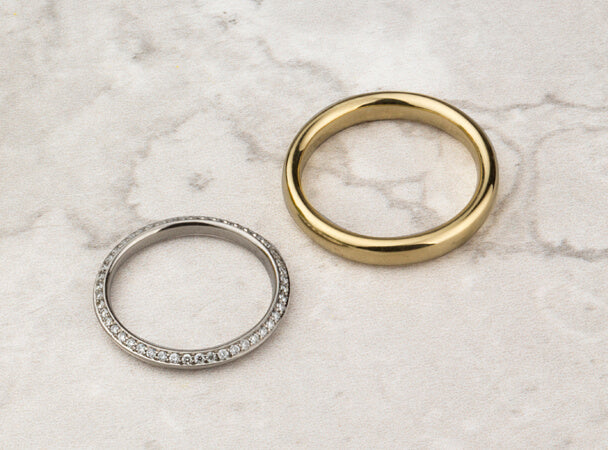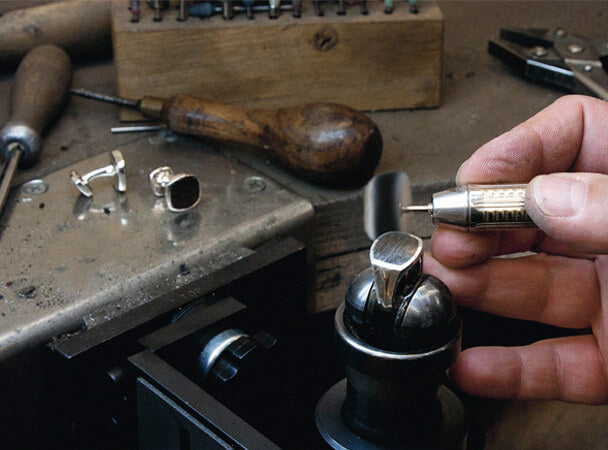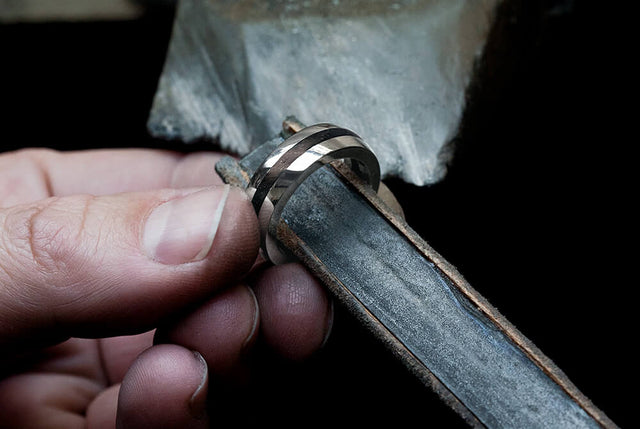Quality & Sourcing
QUALITY & ETHICAL DIAMONDS
All our fine jewellery is handcrafted to the highest standards in our London workshops and we hand select all of our Diamonds.
We only use quality white Diamonds of a high clarity and superior cut that maximises the brilliance, fire and scintillation of the Diamond as well as its carat weight. For Certified Diamonds we supply a GIA (Gemmological Institute of America) or HRD (The Diamond High Council) Diamond Grading Report. To find out more go to Diamond Grades.
When hand selecting quality Diamonds our jewellers adhere to a strict criteria called The 4Cs. To find out more go to The 4Cs. As we are particularly concerned about where our materials come from, especially Diamonds, we also have a fifth Ethical Diamonds requirement where we will only use Conflict Free Diamonds.
Diamond Grades
The Diamonds we prefer to use are well above the industry standard for quality. They are as follows:
- H Colour VS1 - A near colourless Diamond with discrete, very small inclusions that can be detected by an expert with varying degrees of difficulty. This high quality Diamond is non certified below 0.40ct unless requested.
- HVS1 - A near colourless Diamond with discrete, very small inclusions that can be detected by an expert with varying degrees of difficulty. This high quality Diamond is either GIA or HRD certified above 0.40ct.
- EVS1 - A rarer colourless certified Diamond with discrete, very small inclusions that can be detected by an expert with varying degrees of difficulty. This very high quality Diamond is either GIA or HRD certified above 0.40ct, unless requested on smaller diamonds.
- DVVS1 - A truly colourless certified Diamond with extremely discrete, very, very small inclusions that can be detected by an expert with varying degrees of difficulty under 10x magnification. This premium quality Diamond is either GIA or HRD certified above 0.40ct, unless requested on smaller diamonds.
The 4Cs
When hand selecting quality Diamonds our jewellers adhere to a strict criteria called The 4Cs, which stands for Colour, Clarity, Cut and Carat.
Colour
Colour is one of the most important characteristics that determine the value of a Diamond. An ideal Diamond is totally absent of all body colour (colourless), unless you desire a rare Fancy Diamond that comes in the fully saturated colours of yellow, pink, blue, green, champagne, black, and very rare red.
Diamonds are graded on a precise colour scale established by the Gemmological Institute of America (GIA) and range from totally Colourless (D to F) and Near Colourless (G to J), down through a progression of tinted and lighter yellow colours (K to Z). Fancy Diamonds - where an intensive hue is an asset - range from Fancy Light, Fancy to Fancy Intense.
At Stephen Einhorn we like to use premium quality Colourless Diamonds ranging from D to H.



Clarity
The Clarity of a Diamond refers to its optical quality owing to the presence of inclusions (internal objects) and blemishes (external marks) that can be seen under magnification or 10x Loupe. The fewer and less prominent the inclusions, the rarer and thus more valuable the Diamond. Almost all natural diamonds contain their own variation of these inclusions that are minute traces of non-crystallised carbon or small non-diamond crystals, making every Diamond unique.
The grading of Clarity is based on a standard Clarity Grading system, with the extremely rare Flawless (FL) being at the peak of the scale:
 |
FL Flawless or Loupe Clean. These extremely rare Diamonds are absolutely transparent and free from inclusions. |
 |
IF Internally Flawless with minor surface blemishes. These again are extremely rare Diamonds and are priced accordingly. |
 |
VVS1 Very, very small inclusion(s) which are very hard to find with a 10xloupe. The size, position and number of the inclusions determine the distinction between VVS1 and VVS2. |
 |
VS1 Very small inclusion(s) that can hardly be found with a 10x loupe. The size, position and number of the inclusions determine the distinction between VS1 and VS2. |
|
|
SI1 Small inclusion(s) that are easy to find with a 10x loupe. SI2 Are not seen with the naked eye through the crown side.The size, position and number of the internal defects determine the distinction between SI1 and SI2. |
Cut
The quality of the Cut can have the greatest effect on the value of a Diamond. The proportions and symmetry of the facets cut from a rough diamond will establish its light performance, thus determining the polished Diamonds brilliance, sparkle, and fire.
As the polishers skill in shaping the stone is paramount the Cut is the one factor most directly influenced by man. A well-cut diamond will internally reflect light from one mirror-like facet to another and disperse and reflect it through the top of the stone in a rainbow blaze. A badly cut Diamond, such as one that is cut too deep or too shallow, will leak light out through the base or side of the Diamond, thus diminishing its brilliance and value.
As all of our fine jewellery is handmade in the London-based Stephen Einhorn workshops, only those that provide the most dynamic light show are hand selected by our jewellers.
The Cut is not to be confused with the Shape or Style of the Diamond, which you can read about in our Shape and Style section of this guide.
 |
When light enters a perfectly cut diamond, it is reflected from facet to facet and comes back through the top in a rainbow blaze. |
 |
If a diamond is cut too deep or too shallow, the light is reflected to the opposite facets at the wrong angle. If it is a Deep Cut it will 'leak' light out through the side of the diamond, thus diminishing its brilliance and sparkle. |
 |
If the diamond is cut too shallow, the light 'leaks' through its base and the eye may see a dull reflection. |
 |
The proportions and symmetry of a cut diamond are of extraordinary importance as they have the greatest influence on the brilliance, liveliness or sparkle of a stone. They also determine how well the diamond will sit in its hand-crafted Stephen Einhorn Setting. |
Carat
Carat is the standard international unit of weight for Diamonds and does not refer directly to the Diamonds size. However as larger Diamonds occur less frequently in nature they can be more valuable, but only depending upon their rating with the other 3Cs. It is vitally important that colour, clarity and cut are also taken into account when selecting a Diamond for aesthetic appeal, quality and value.
Two stones of equal size can have very different values depending on their quality. Carat weight does not affect the value in diamonds proportionately and the larger the stone the more disproportionate the increase in cost per carat.
1 Carat = 1/5 (0.2) Gram. The Carat is further divided into points; a unit of weight used only for Diamonds. 1 Point = 1/100 (0.01) Carat.
When hand selecting Diamonds we take into account all of the 4Cs. We prefer quality white Diamonds that display the greatest brilliance, fire and scintillation.
If you require a particular size Diamond of a particular Carat weight, Colour, Clarity, and Cut we can source this for you as part of our Bespoke Jewellery Service.
Conflict Free
Conflict Diamonds are rough diamonds that are traded illicitly by rebel movements in many parts of West and Central Africa to purchase arms and fund brutal military campaigns. These insurgent groups perpetrate violent atrocities and human rights violations against innocent civilians and prolong civil wars. The Kimberley Process Certification Scheme is an international, voluntary system that bans the trade of Conflict Diamonds and imposes extensive requirements on Participants to certify that shipments of rough diamonds are free from Conflict Diamonds.
We choose to comply with the United Nations backed Kimberley Process Certification Scheme and refuse to use Conflict Diamonds. We also insist that our suppliers provide us with written guarantees, ensuring they do the same.
We offer this pledge on behalf of the millions of innocents who have suffered displacement, maiming and death at the hands of the rebel groups who have been funded by illicit diamond proceeds.
QUALITY GEMSTONES
Naturally formed gemstones come in a large range of types, in a huge variety of colours and cuts, from many parts of the world. As all items from our London workshop are handmade using ethically sourced materials and labour we hand select all of our quality coloured gemstones from the huge choice available. Our gemstones are carefully chosen for their liveliness, richness & evenness of colour and aesthetic appeal. Any gemstone that does not meet our high standards is immediately rejected. We only use reputed gem dealers who keep a close check on the conditions under which their natural coloured gemstones are mined. Our precious stones are as ethically sourced as possible.
As we are particularly concerned about where our materials come from, especially diamonds, we also have a fifth ethical requirement where we refuse to use conflict diamonds which are inexorably linked with human rights abuses and conflict in many parts of Africa. We do not buy or use rubies from Myanmar due to the ongoing situation of the Rohingya people. It is not acceptable to ignore these abuses of human rights.
